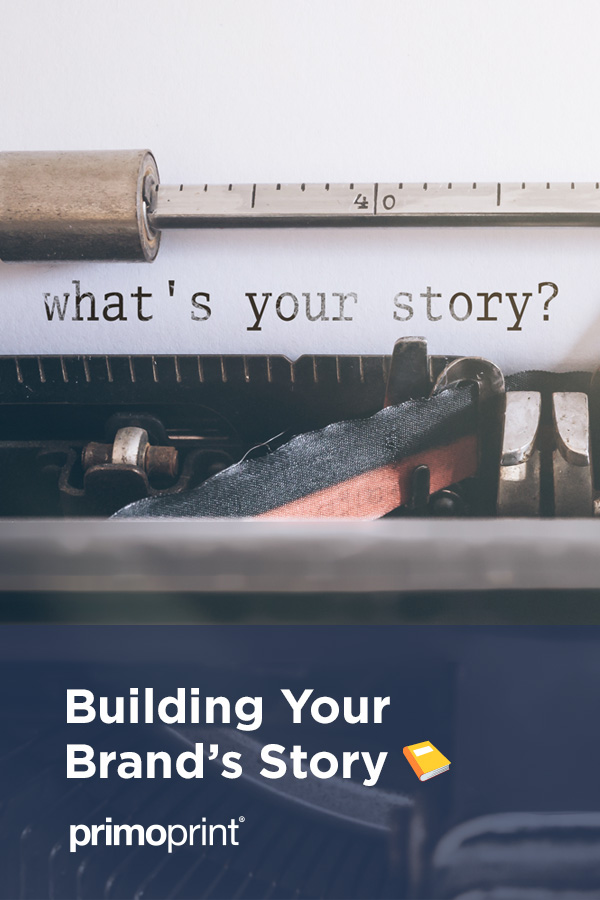Who doesn’t love a good story? Even if the product, service, or solution doesn’t align with a specific person, with a story, they might still want to find out what happens in the end. Starting your narrative with the right hook, pushing it with the perfect conflict and ending in a proper way will captivate your audience. Your brand story has the potential to guide your business into more money and more leads.
What is Brand Storytelling?
Storytelling, as it applies to marketing and business, reveals “the why” behind your existence. Every business has a story. Do you remember it? Most brands can answer it with the fact that something was missing before. You exist for a reason. Surely, you must have an idea. A product or service is only as good as its ability to solve something. Though it seems small, Kit-Kat promises that when you eat their candy bar, it’ll feel like you are taking a break from something. You’ll at least put down whatever it was that you were doing.
The brands that win are the brands that tell a great story. When it comes to transmedia storytelling, the brands that win are the brands that tell many great stories and are able to connect them all together. – Mitch Joel
Your Consumer: The Truth Behind a Brand’s Story
The actual brand is about you, but the story is about your consumer. Your story is a portrayal of what they’re going through. “Targeting” is a marketing term that you should also know. It limits your work to that of only reaching people who can relate to you. No one goes to a gym to sell bags of greasy chips. People do buy these items, but if you’re in a gym, you’d have better sales with protein bars and smoothies. Your audience will crave the chips but will lack the confidence to buy them around others.
This simple science brings us to the necessity of stories that replicate the experiences of your leads. Are they a college student waiting for their final day of graduation? Then that’s the place where you want to start. Or start with the fact that someone can’t seem to lose weight if you’re selling a dieting product. Though you might not expect it at first, the most effective messages begin with a clear conflict.
Experiences:
Experiences are proven; they have the most significant influences on our brains. We learn more and better by doing or going through something. A story consists of three experiences or parts to manage: a beginning, middle, and end. You aim to connect with people quickly. Don’t waste time. Let them know that you understand what they’re dealing with. More importantly, let them know that whatever it is that it can be solved.
Get Emotional. Find Your Consumer Where They Are:
Take the word “greed” for example. Telling your readers to see themselves as making a million dollars overnight invites them into the actual sensation. In this case, the conditions of greed not only change, but even its moral boundaries might shift. It’s because, at that point, people are faced with emotion and not just the idea. The first rule of a compelling story is to show and don’t tell.
Strategy and the Laws of Cause and Effect
An explanation leaves little room for creativity, wit, or humor to be used. To explain something is to say that it’s black or white; hot or cold. Stories, though they can be a guide with exact intent, grant a bit more room for subjectivity within your reader. You not only want people to relate but to relate on their own, personal levels. Stories are more strategic than explanations. How often have you found yourself explaining something by offering a real-life story as an example?
Great, now lead with that story instead. Play with the laws of cause and effect.
Build Proof and a Historical Picture:
Use a story to establish rapport with your leads and readers. You want to come off as believable when you’re operating as a brand. It may be that your consumers won’t fully grasp your solution until it’s said within the context of a story.
Nurturing Your Leads:
Nurturing leads, keeping them interested and guiding them through your sales funnel can be done with greater ease when you’re leveraging the power of a believable story. Consider the stages that they’ll experience as they get closer to your solution. Make each moment count and grow their interest. This will make the solution you offer that much better.
Your “USP” and Why You Have to Be Unique
When you begin your message with a story, you won’t have to explain yourself. Starting a sentence with, “We are. …” could, alone, trigger some disbelief. For this reason, marketers rely on something called a “Unique Selling Proposition.”

They want to show and not tell. A USP implies that your brand has an edge over others in your market. When Burger King had to differentiate itself, its angle was that you could “have it your way.” You can take out or add to your burger any way you like.
How to Tell a Story: Quickly Get to Your Point
Learning how to tell a story begins with being relevant to the audience. You have to know what the user wants. Taking to their side of the equation allows you to share your message in the fastest way. You’ll then want to perfect that message before sharing it. A simple phrase such as, “Got milk,” could have taken months to finalize. What you write can be created into fewer words.
Pitching a Brand Story on the Fly
Try this simple exercise, imagine that you have little time to tell your consumer about the “it” in your product or service. With at least 25-consecutive attempts, try summarizing your offer in a single sentence. Now, polish each sentence, take out unnecessary words, and eliminate any ambiguity. You’ll ultimately want to be clear, concise, and straight to the point. Continue perfecting that take and be confident when reaching your leads.
Being able to sell your idea and to tell your story might become your greatest asset in marketing.
How do you tell your brand story? Let us know!
Additional Resources:
- What is Brand Photography and How Can it Help Grow Your Business:
A brand is something that distinguishes you from your competitors and gives your audience a clear understanding of what you do. Here are some tips to ensure your brand is portrayed correctly by photography. - Using Vision Boards to Create Your Brand Image:
Learn what a vision board is and how creating one can help craft and identify your brand. Whether creating a brand image or working with a client to build theirs, a cohesive brand vision is essential.





